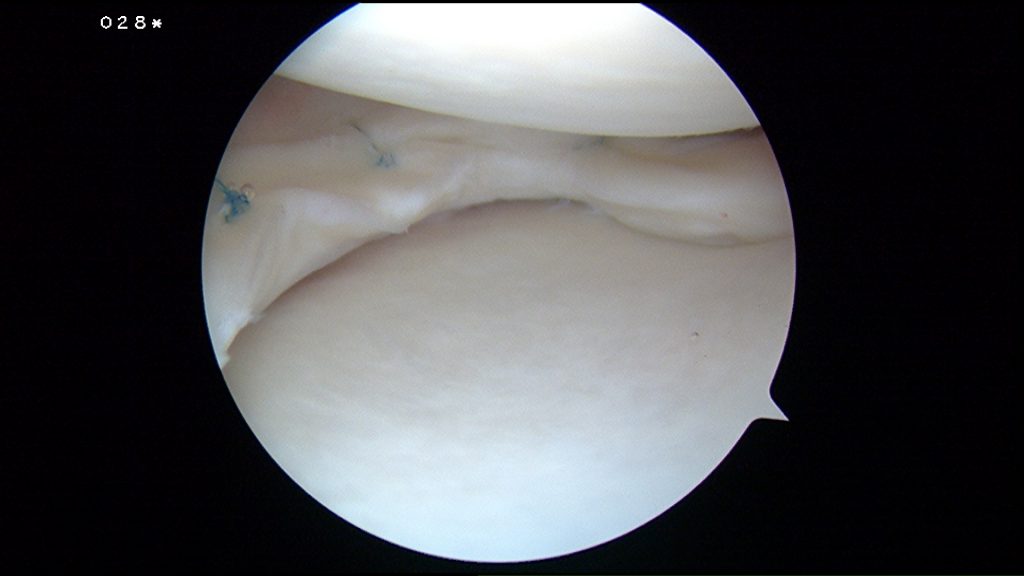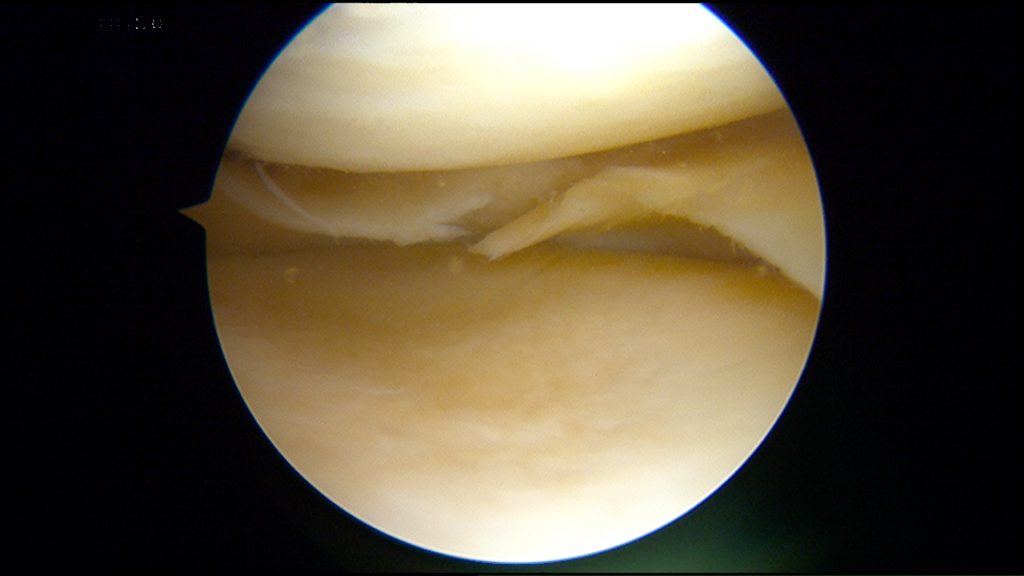Meniscal Tear
What is a meniscus?
The meniscus is a firm piece of soft tissue between the thigh bone (femur) and shinbone (tibia). There is a pair of them in each knee. The inner (medial) meniscus is crescent or ‘C’ shaped (‘meniscus’, from the Greek word for moon). The outer (lateral) meniscus has a tighter, ‘U’ shape. They act like shock absorbers, spreading load across the joint, protects the joint surfaces and assist in rotation of the knee.
How does a meniscal tear occur?
Meniscal tears are one of the most common forms of knee injury. When people talk about a ‘torn cartilage’ in their knee they usually mean a meniscus injury. Tears are usually classified in two ways, as traumatic or degenerative (‘wear and tear’). In a traumatic injury, a sudden, forceful impact to the front or side of the knee may cause either meniscus to tear as the knee joint jolts out of position. Tears can also happen when the knee twists suddenly, for instance when the leg ‘plants’ on the ground and causes the joint to excessively rotate. These injuries are most common during sporting activity – in a football or rugby tackle or in a sport that involves frequent twists and pivots, such as soccer or hurling. By contrast, degenerative tears happen through gradual deterioration of the meniscus. Since the elasticity in our joints declines with age, tears can happen more easily as we get older. Meniscal tears can also be complicated by frayed pieces of meniscus can sometimes break off and become lodged in the knee joint, causing the knee to seize or lock up.
How to diagnose a meniscal tear?
Diagnosing a meniscal tear starts with an assessment of your symptoms and examination of the knee. Pain from a meniscal tear can be felt along the joint, or more generally across the whole of the knee; it often gets worse during activities like squatting and twisting. Meniscal tears can also be accompanied by swelling, stiffness and difficulty in bending and straightening the knee, a clicking or grinding sensation in the joint or sometimes by a ‘popping’ sensation at the time of the injury. An x-ray or MRI scan to help diagnose the injury. What happens next? The first line of treatment for a meniscal tear is rest, accompanied by elevation of the knee and regular application of an ice packs to reduce swelling and over-the counter-painkillers. Minor meniscal tears may settle within a few weeks. Traumatic tears are less likely to heal independently and may eventually require surgery. Surgery tends to focus on repairing the torn meniscus in the younger patient, or on removing the loose cartilage that has caught in the joint.


